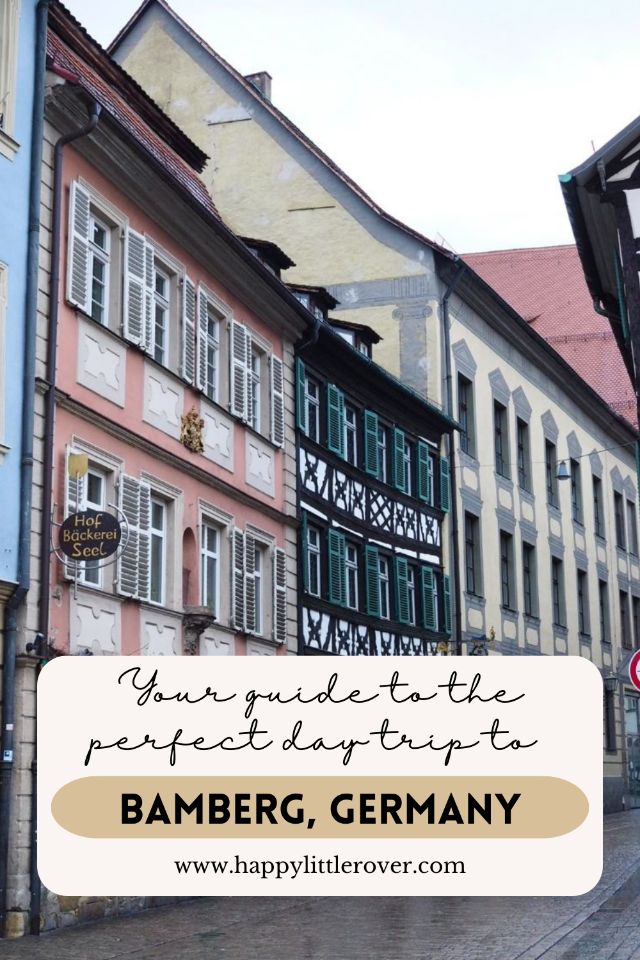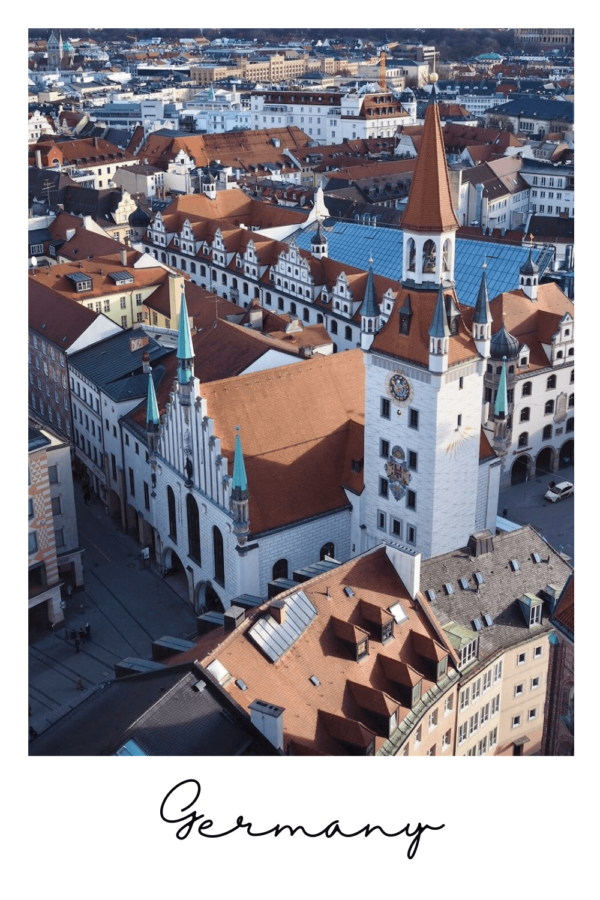Your guide to the perfect day trip from Nuremberg to Bamberg
Looking for the best day trip from Nuremberg to Bamberg? An ideal outing to a UNESCO-listed fairytale village, filled with quaint cottages, a towering cathedral and even a castle high on the hill?
Wondering how to spend a day now that you’ve satisfied all of your Nuremberg cravings and eaten enough Nurnberger Rostbratwurst for two?
I’ve got just the answer to your questions, a spot that’s arguably even more charming than the imperial majesty of Nuremberg.
We’re heading to the little village of Bamberg, only half an hour by train from Nuremberg and a very walkable old town. Let’s hit it!


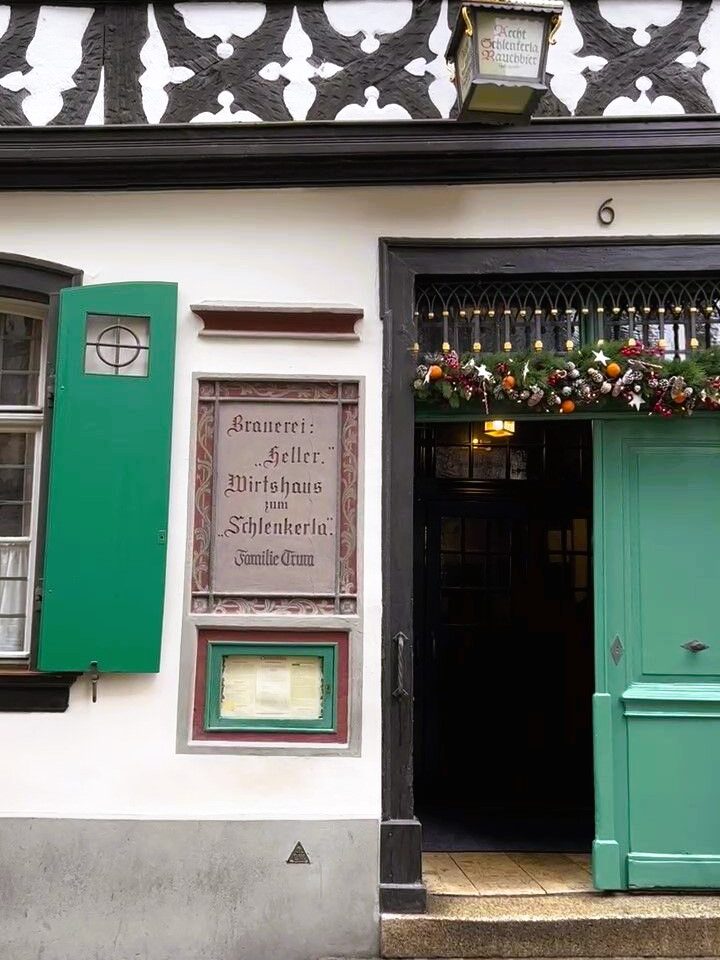
How do you get to Bamberg from Nuremberg?
So you have a few choices, luckily Bamberg is only 62km from Nuremberg and easily reached within half an hour to 45 minutes, depending on your mode of transport. Here are your main options:
By train: trains run roughly every 20-30 minutes, taking roughly 40 minutes to reach Bamberg.
The cheapest trains are RE (regional express), you can purchase a day pass for these trains either at the ticket machines at the station or online to show on your mobile. See more info below on exactly how to do this.
By car: take the A73 north and follow it for 45 minutes, you’ll see the exit for Bamberg clearly signed.
Some parking options include the Tiefgarage Geyerswörth City (2 minute walk to the Altes Rathaus) or Parkhaus Zentrum Süd (10 minute walk to the Altes Rathaus). Both are paid options.
Visiting in the cooler months? Try out my guide on how to visit Nuremberg in winter!
My exact strategy to get the cheapest train tickets from Nuremberg to Bamberg
1. Go online to or find a ticket machine at the station
2. Purchase a VGN Tagesticket Plus (valid for up to two people over 18 and up to 4 children under 18 can also travel free) for €22.10.
3. The ticket is valid for the day until the last train and if you buy it on a Saturday, transport on the Sunday following is free as well!
4. You’ll input what day you need it for, either that same day or if you’re very organised and buying it in advance, the relevant day. There’s no price advantage to buying them early, unlike the ICE trains.
5. Once purchased, jump on any RE or S trains heading towards Bamberg, you can double check the exact times closer to the day. You’ll also see that the S trains are slower, taking about an hour instead of 45 minutes.
I can confirm that this works, I did it myself on my trip to Bamberg!
And it’s essentially free to bring a friend with you, they can repay the favour by taking all of your Insta shots in front of the old town hall. Which is coming up soon.
Note: You must use only RE or S trains for the VGN ticket to be valid, you can’t just jump on any!
Select the “local transport only” button on the Bahn.de website to make sure that the train you’re planning to take will be suitable.
The down low on Bamberg
While this sleepy village might seem less impressive compared to neighbouring Nuremberg, way back in the 11th century, it was an up-and-coming destination.
So much so, that it was even referred to as a challenger for the eternal city, Rome in Italy.
Of course, Rome has got poor old Bamberg beat these days but not for a lack of effort put in by popes and emperors over the centuries.
This imperial attention helps explain why Bamberg has so many grand buildings, despite being a relatively small city, especially in German rankings.
Popular during the Middle Ages, it fell out of favour during the industrial years.
While Nuremberg embraced the factories and industry, Bamberg kinda got left behind.
But while Nuremberg, unfortunately, suffered heavy bombing and destruction during WWII, Bamberg avoided any damage. Leading to its beautifully preserved buildings and layout today.
It’s so well preserved that it’s even UNESCO listed for being an outstanding example of a medieval city, especially with its remaining gardens and agriculture nearby.
And all those stunning houses and cathedrals are just ready and waiting for you!

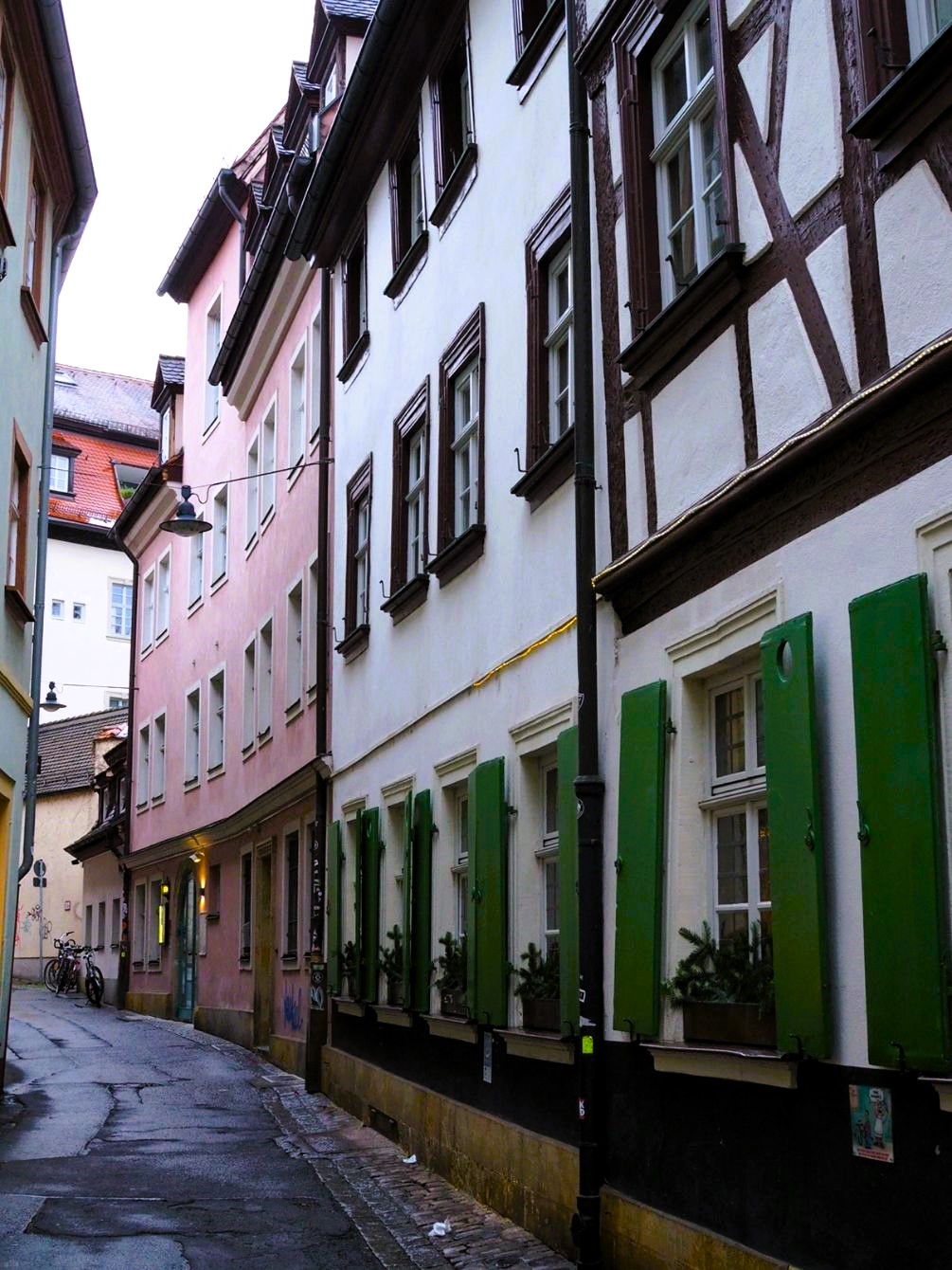
Top sights you can’t miss on your daytrip from Nuremberg to Bamberg
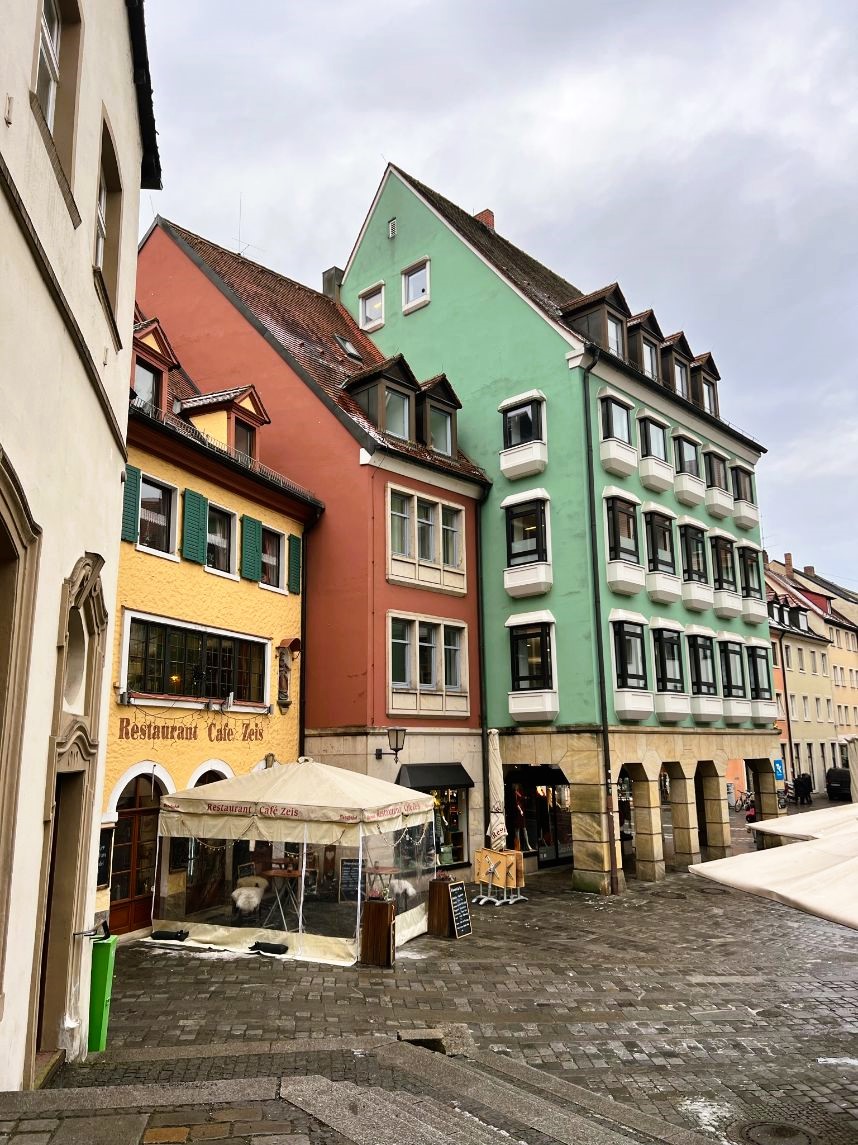
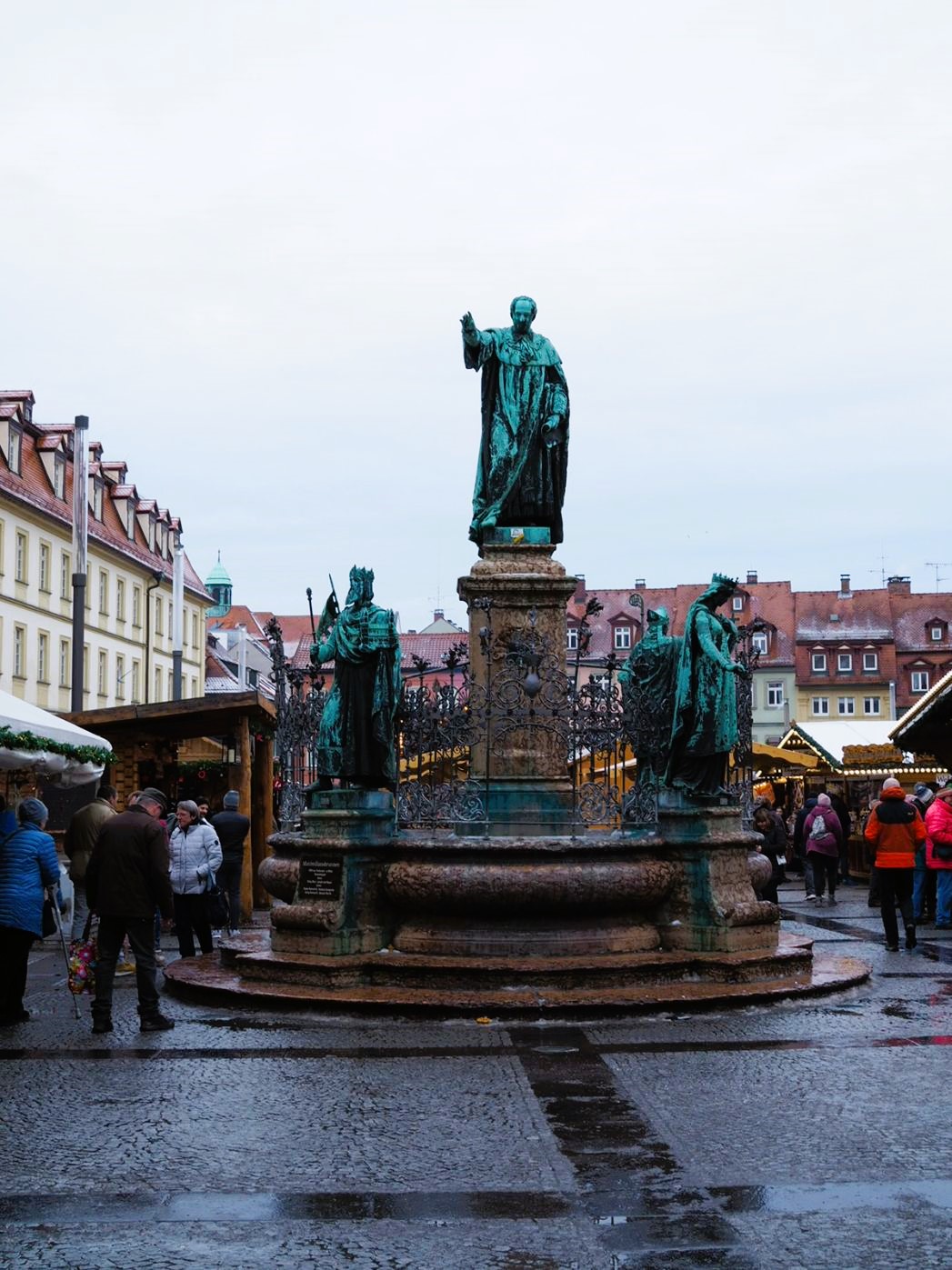
Head into the city centre, you’ll pass plenty of bakeries if you haven’t had your brekky yet!
I’d recommend Café Nika or Café Espress on your way into the old town, both have delicious menu options and more hearty breakfasts beyond pastries. If you’re headed to Café Nika, don’t miss their rooftop if the weather is nice!
Once you’re feeling caffeinated and refuelled, we can get back to our sightseeing for the day.
I’ve included the hot hits of places you can’t miss while you’re wandering through the adorable little streets of Bamberg.
1. Altes Rathaus and Klein Venedig
2. Bamberger Dom and Alte Hofhaltung
The majority of the beautiful scenery and monumental buildings are in these two zones.
While Bamberg is a very walkable city with plenty to see, if you just have the one day, I want to make sure that you’re getting the best bang for your buck.
So you can beeline straight for the heavy hitters and we can save the smaller sights for another time.
Looking for the detailed version? Here’s the only walking tour of Bamberg you’ll need!
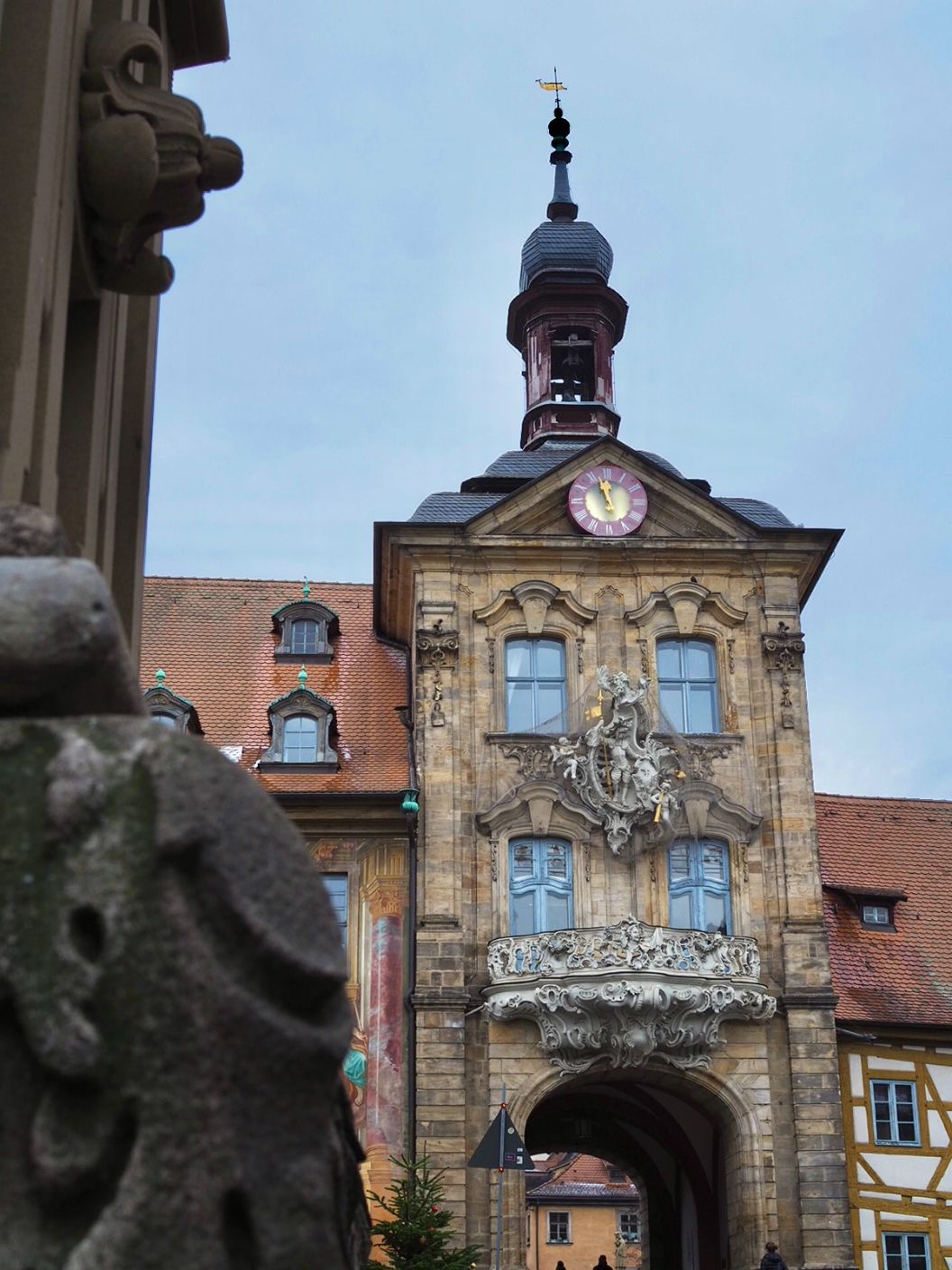

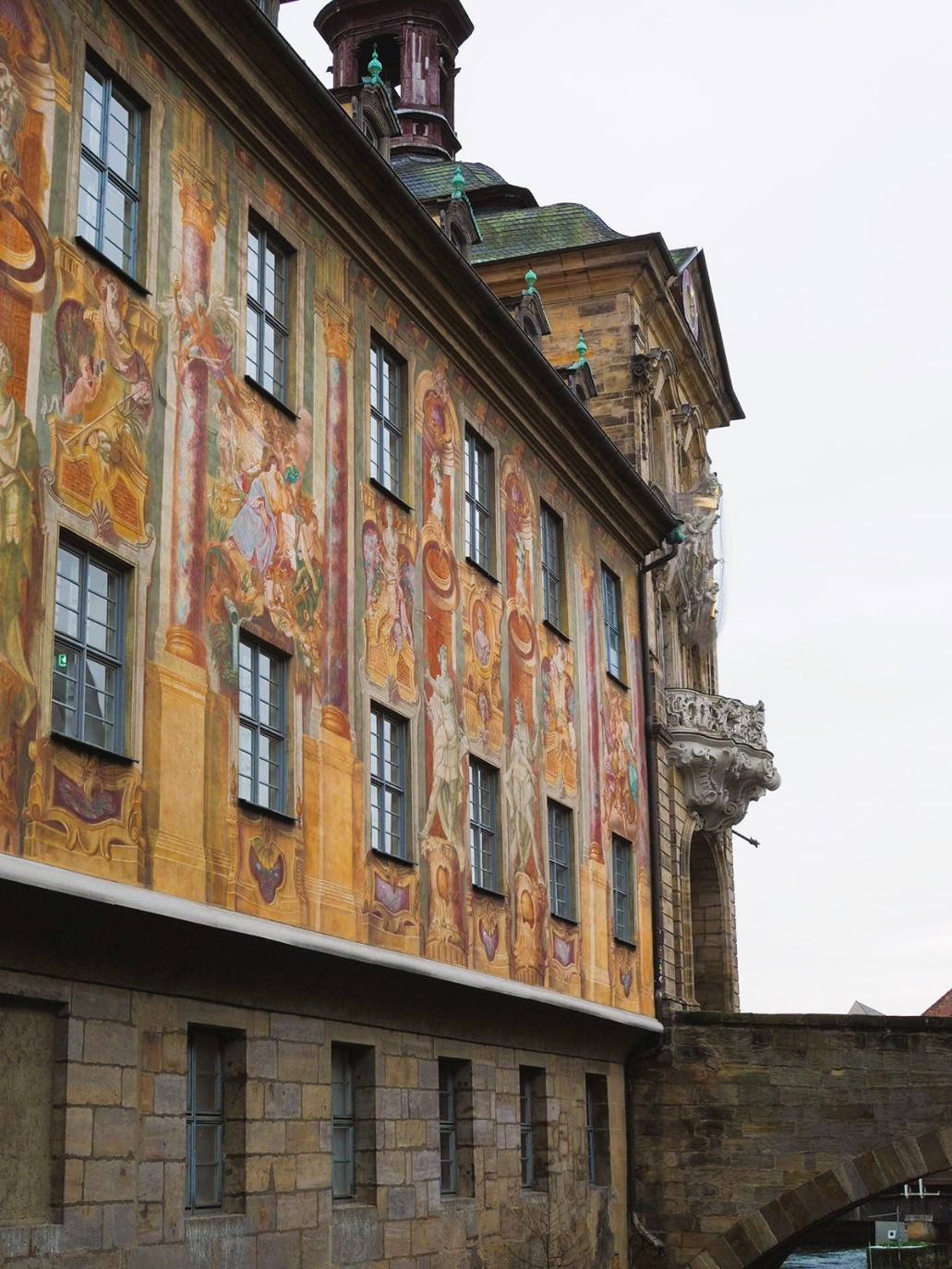
The perfect day trip from Nuremberg to Bamberg: Altes Rathaus & Little Venice
Once you’ve wandered up through the markets and admired the cute boutiques on the way, find your way to the ultimate showstopper.
The Altes Rathaus is the much-photographed symbol of Bamberg, famously positioned out in the middle of the Regnitz.
According to local legend, the bishop refused to give any land to the townspeople so that they could build a town hall.
They decided there was a convenient way around this and chose to put it instead in its current position.
The bishop probably would have agreed if he knew how many visitors come these days to admire the Gothic beauty of this little building.
The hall section with its spire and decorated balconies now houses a porcelain museum (paid entry) and the half-timbered house addition which faces the Geyerswörthsteg bridge used to be a home for the head of the town guards and his family.
Take your time wandering around, admire the beautiful coat of arms and balconies on both sides, as well as the vibrant frescos showing typical medieval scenes.
There’s even a disembodied cherub’s leg sticking out of the wall, see if you can spot it.
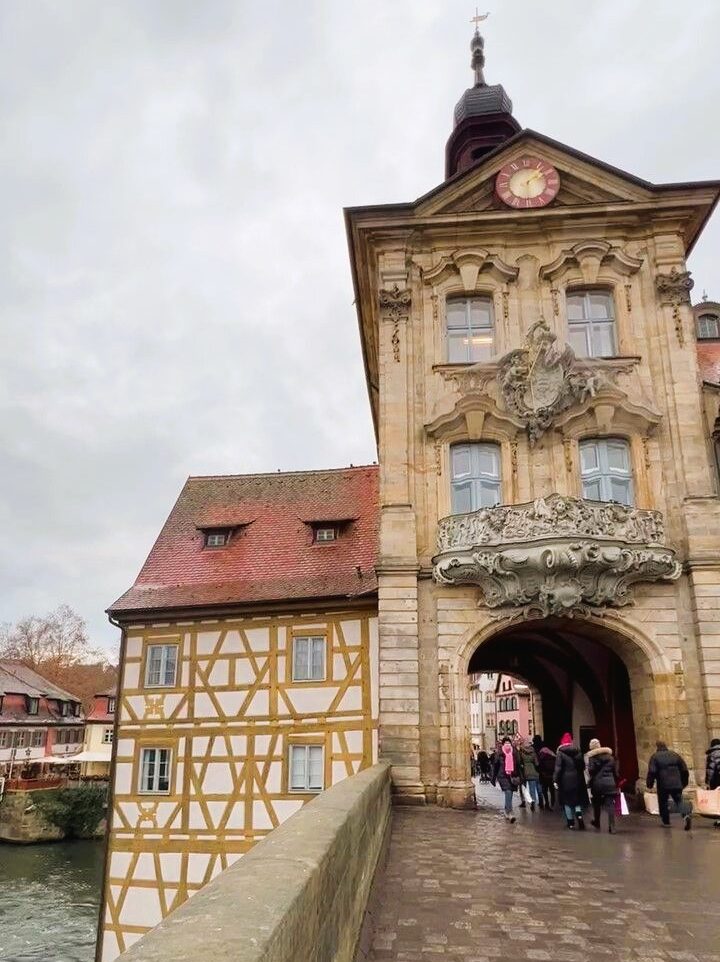
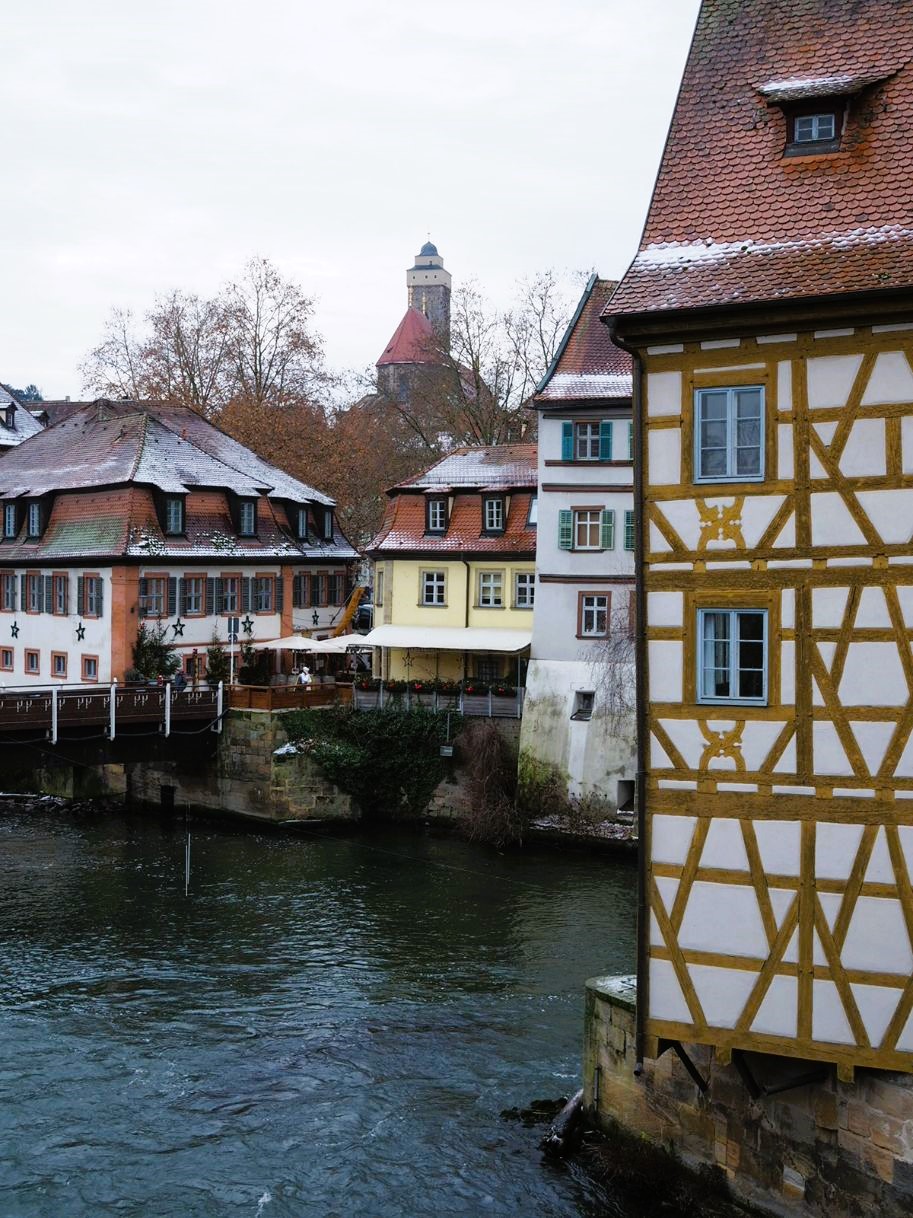
Top tip: When you’re ready to snap your postcard replica, head over to the Geyerswörthsteg bridge and look back to the town hall for the money shot.
Don’t miss the statue of Empress Kunigunde down on the Untere Bridge, she’s got a gold accented crown and sceptre, plus a magic view out over the former fishermen’s houses of Little Venice.
These quaint houses, now sitting pride of place in Bamberg, nestle right along the banks of the Regnitz, their gardens and terraces supported by sticks out in the water.
Hence the reference to Venice, though we should probably emphasise the little aspect of the name.
In the spring and summer, the gardens and terraces are lush with flowers, adding to the beauty of the scene.
You can enjoy the best views from the bridge next to Empress Kunigunde and along the street “Am Leinritt”.
To really take in the vistas, you can also book onto a guided boat tour along the canals but keep in mind that these don’t run in the winter.

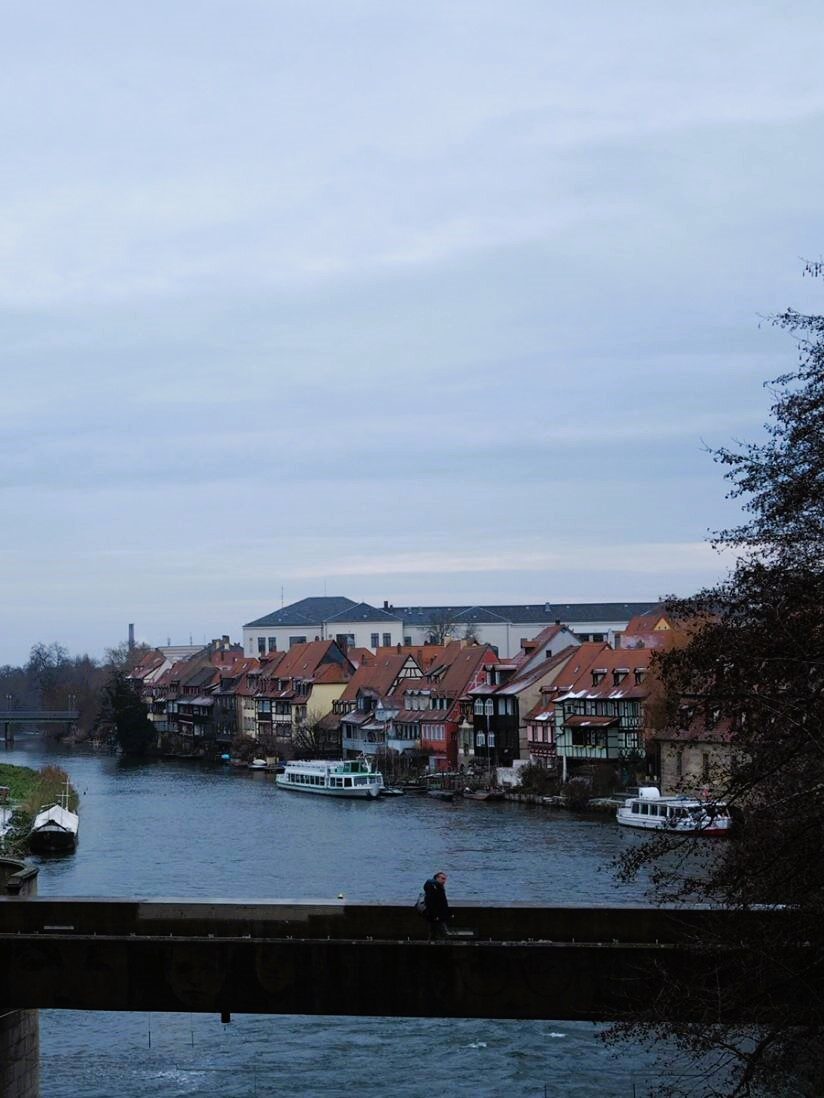
What to eat and drink on your day trip from Nuremberg to Bamberg
Right so we’ve oohed and ahhed at little river cottages, snapped our new profile pictures in front of the Altes Rathaus, what’s next?
I think we’ve earned ourselves a taste of Bamberg hospitality. It’s time for some culinary sightseeing.
Rauchbier: a Bamberg speciality
You can’t come to Bamberg and not try the ahem, unique, Rauchbier or smoked beer.
Interestingly, the smoky flavour comes from the traditional method of drying the malt over an open fire.
Originally this technique was more widespread but now only two breweries in Bamberg have kept up this age old tradition to produce a beer with a distinct flavour.
I’ve heard it described as something you either love or you hate, I wasn’t totally in love with my beverage when I visited but don’t let that put you off giving it a try.
If you’re keen to try out this smoky brew, head over to the famous Schlenkerla.
The Heller family have been running the brewery and restaurant for 6 generations, so you can be sure that you’re getting an authentic Bamberg experience.
Blaue Zipfel (Blue Tips sausages)
But what about traditional Bamberg food, I hear you ask?
While there’s a lot of crossover with Nuremberg just down the road and both spots being in Franconia, Bamberg does have its own sausage style.
The “Blaue Zipfel” or blue sausages are boiled in water with a mixture of herbs and spices, as well as juniper berries.
By the end of their soak, the sausages are indeed quite blue thanks to the juniper berries.
Served with gravy and often mashed potatoes, the result is a smoky and herbaceous filling dish.
Bamberger Zwiebel (the Bamberg onion)
Another traditional Bamberg dish is the Bamberger Zwiebel or Bamberg onion.
This is a hollowed-out onion stuffed with pork mince and bacon, topped with more bacon and served with a gravy made from smoked beer.
Plus some mashed potato to mop up all of those delicious juices.
I chickened out and ate a delicious Käsespätzle while I was there, the German version of mac and cheese with homemade noodles.
It’s one dish I can never resist ordering if I see it on the menu in Germany, it’s just not the same when I order it anywhere else!
I’m saving my experience with the Bamberger Zwiebel for my next trip back to this little delightful little town.
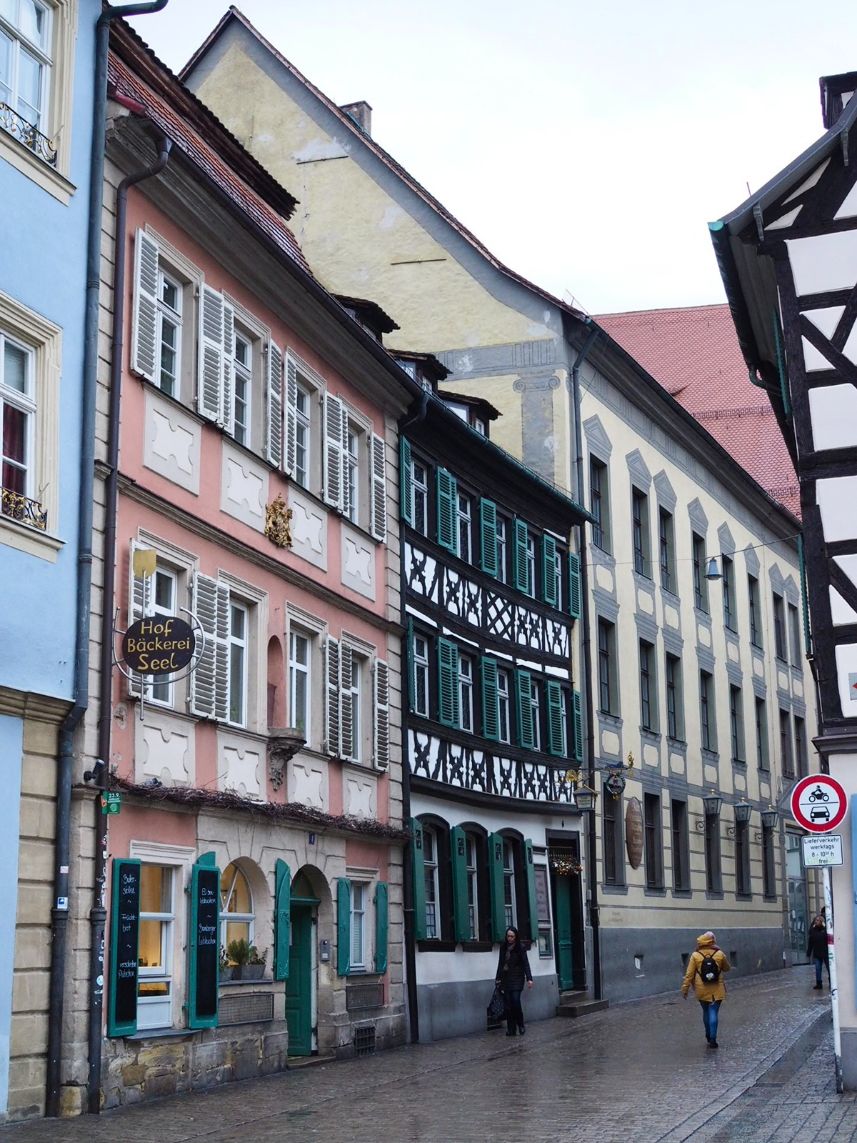


If Schlenkerla is all booked out or you’re feeling something else, you can also try Restaurant Ringlein or Kachelofen.
Both are very traditional venues nearby with oodles of history.
Strolling up and down the atmsopheric Obere Sandstrasse admiring the wonderful old houses and deciding where to eat is half the fun.
Top tip: If you’re keen to try the famous stuffed onion, Schlenkerla is your best bet. They even have the recipe posted on their website for you to make at home.
Keen for more Franconian feasting? Take a look at my guide to Nuremberg for more culinary delights
Your ideal daytrip from Nuremberg to Bamberg Pt. 2: Bamberg Cathedral
We’re heading up the hill to see Heinrich’s pride and joy, the Bamberg Cathedral or Bamberger Dom as you’ll see it signed on the way up.
When you enter, don’t miss the famous Bamberger Reiter or Bamberg knight, his statue is halfway up one of the columns. He’ll be easy to spot, pretty much life size just near the entrance.
Historians aren’t sure on who he is meant to represent but he does look quite impressive up there.
Admire the colossal size of the cathedral, I felt like it seemed just enormous for the little town of Bamberg.
But that’s what Heinrich was hoping for! Speaking of the big guy, he and Empress Kunigunde are buried up here too.
Along with the only Pope to be entombed outside of Italy or France.
You can find the hand-carved tomb of Heinrich and Kunigunde, which is considered a masterpiece, up on a raised platform. It took the artist 14 years to painstakingly carve out.
Wander around the cavernous space, you can also head down into the crypt for a look at some of the original foundations of the initial constructions.
After your time in the cathedral, there are two more sights in this square, the Alte Hofhaltung or old courtyard and the Neue Residenz.
Stop into the courtyard for a look at the ancient buildings, formerly the site of a castle dating from the 800s and our friend Heinrich’s palace whenever he wasn’t roaming around Europe.
Home to its fair share of drama over the centuries, including the murder of a German king, it even served as a filming location for the Three Musketeers movie in 2011. Art mirrors real life!
It houses a museum (paid entry) filled with the history of Bamburg but it’s only open outside of the winter months.
The Neue Residenz is the large palace on the left of the square as you exit the courtyard and it was formerly one of the glamorous residences of the bishop-princes.
The opulent decoration of the inside is incredibly well-preserved thanks to Bamberg avoiding serious damage in the war, access is only available on a guided tour.
There is also a lovely rose garden behind the palace if you happen to be visiting in season, the many statues and colourful flower beds are a sight to behold.
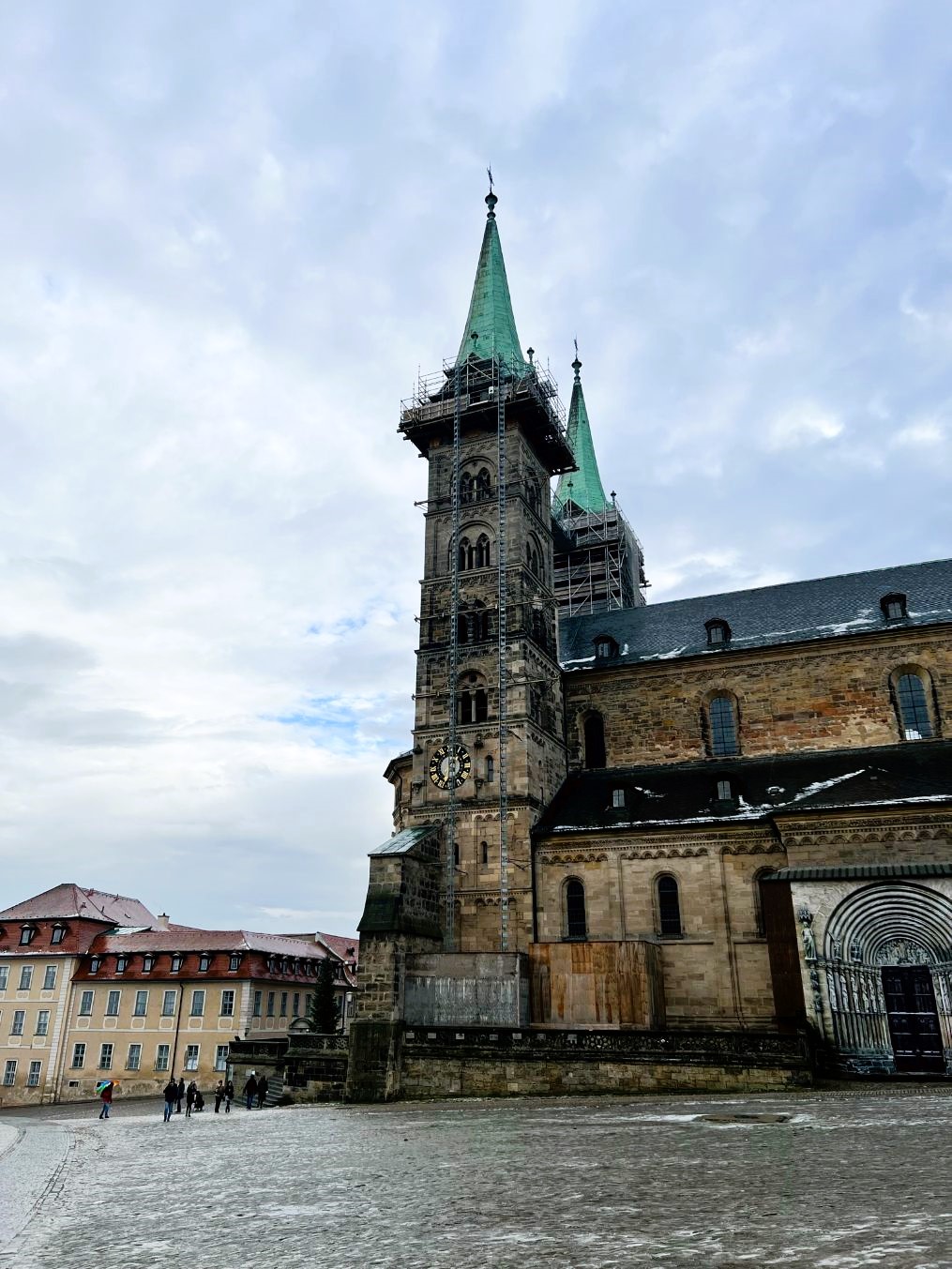
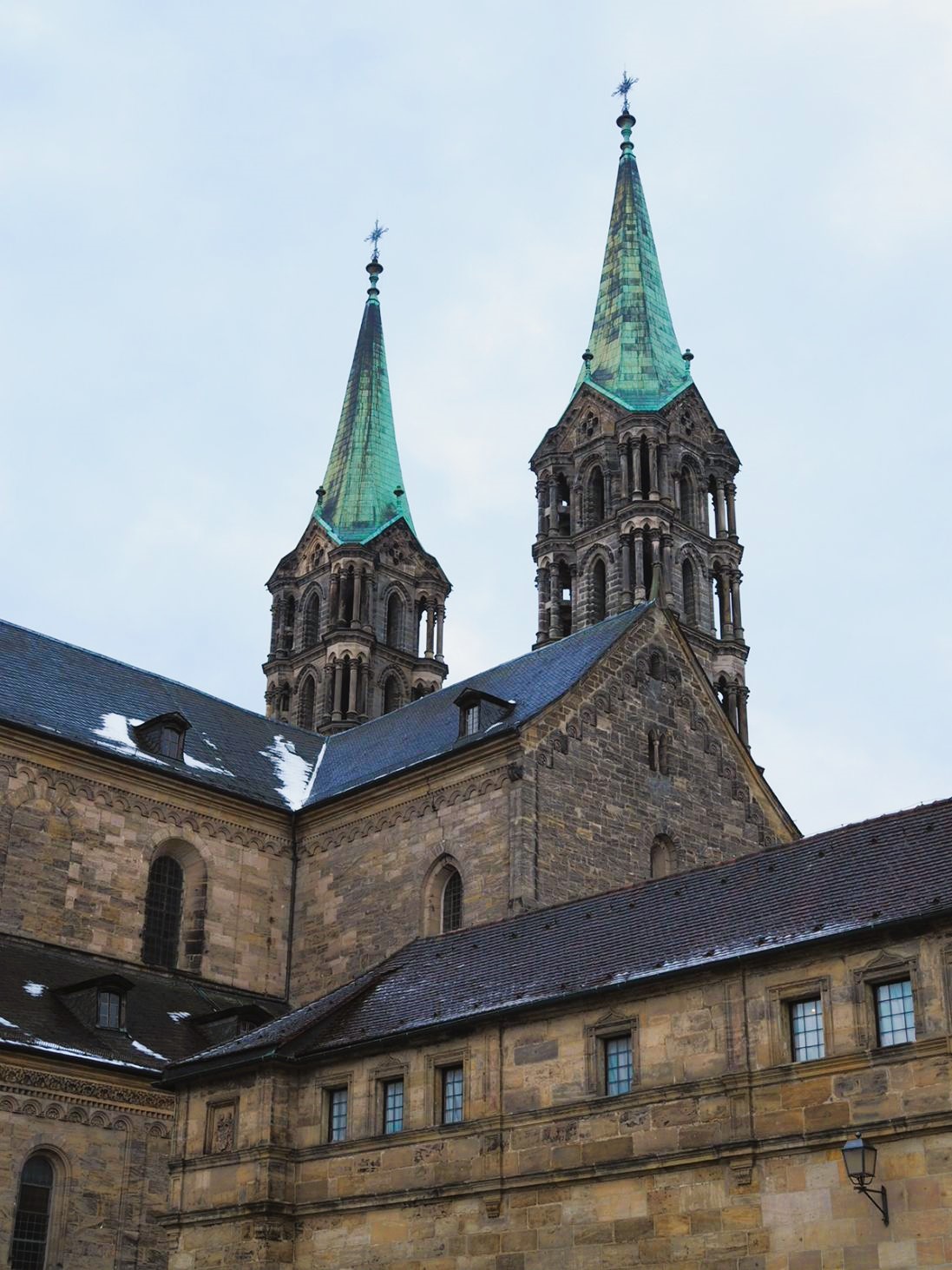
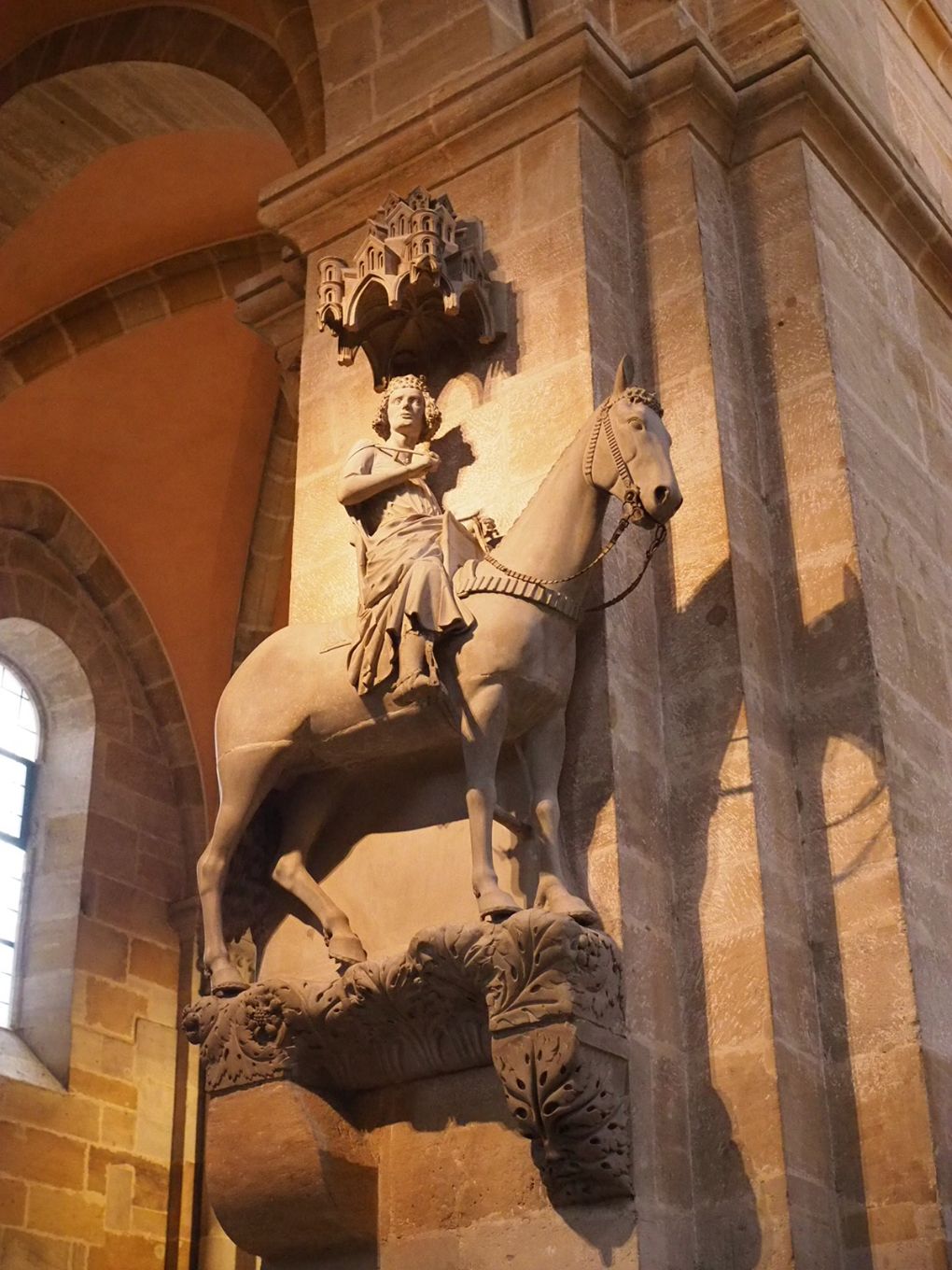
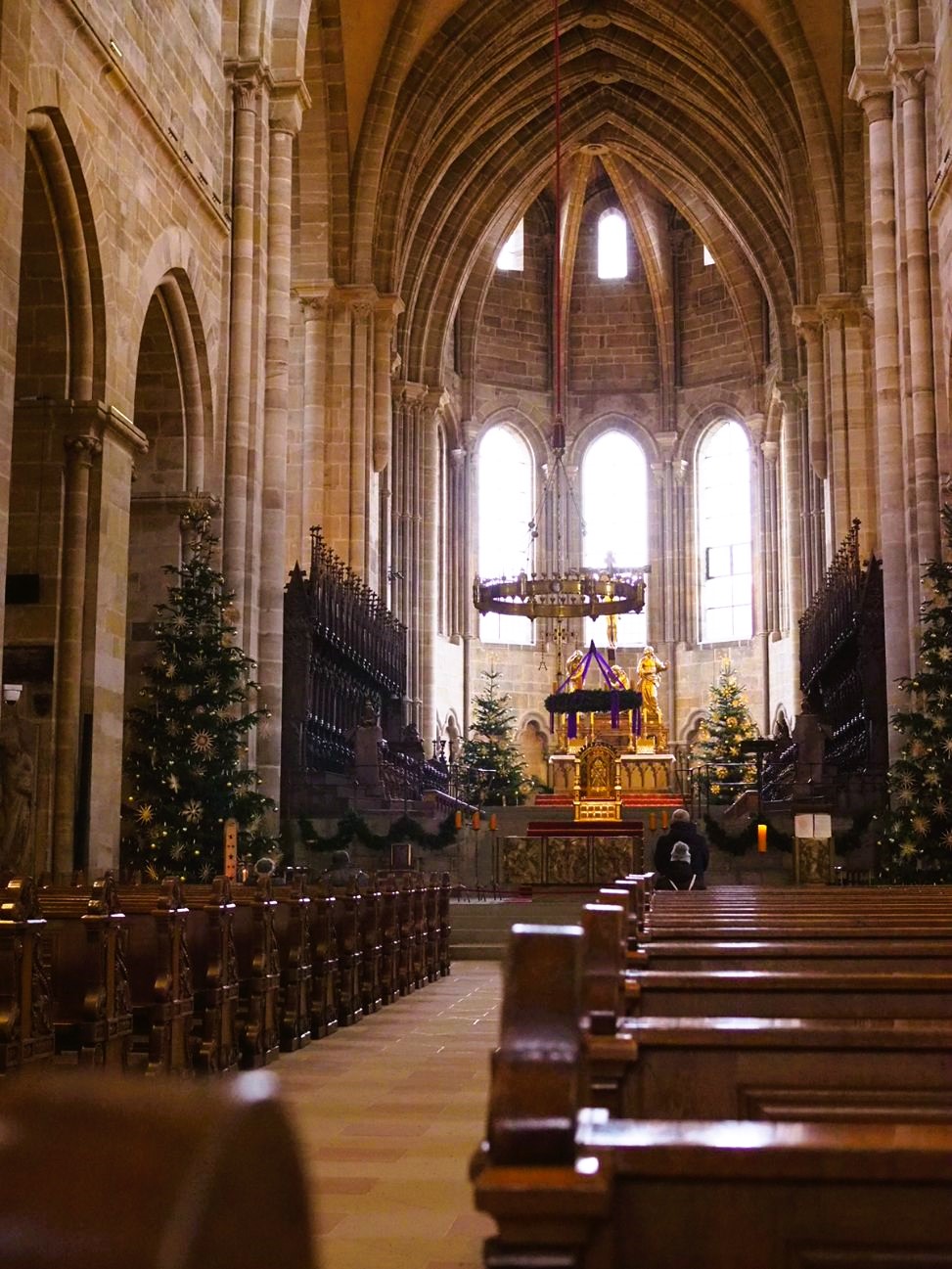
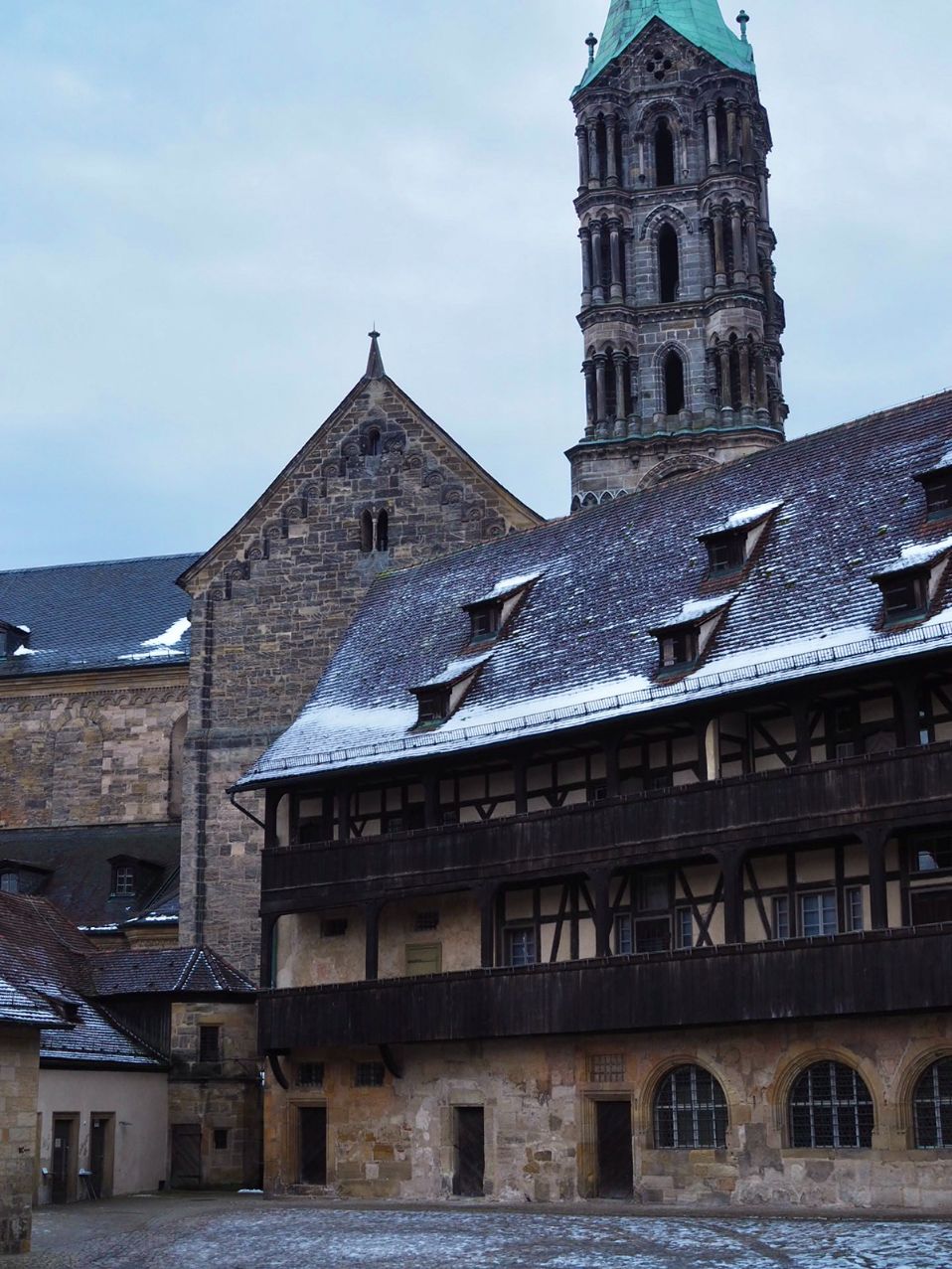

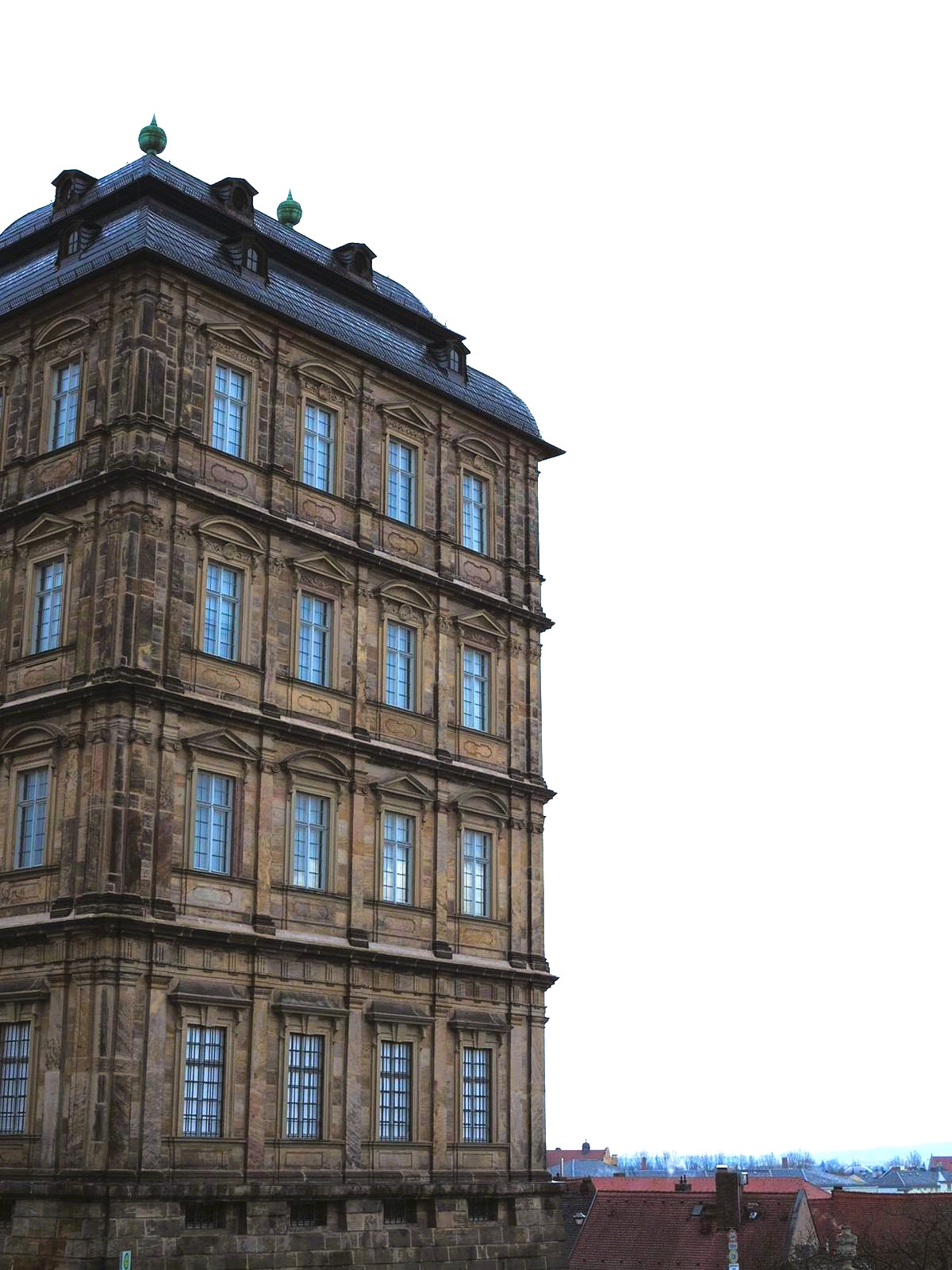
Your final stop on your daytrip
On our way back down from the hilltop cathedral and old palaces, you have a choice while you’re rolling through the peaceful streets of Bamberg.
You can either finish up your day trip from Nuremberg to Bamberg and head back to the railway station to start your journey back to Nuremberg.
Or you can pop into a café to indulge in the traditional German answer to afternoon tea, Kaffee and Kuchen. Or in English, coffee and cake.
A beloved pastime, happily adopted by myself. German baked goods are relatively unknown in Australia and I love a cosy café. Try Cafe am Dom or Café Hörnla back in the centre of the old town.
You might even see another Bamberg speciality, the Hörnla, a little crescent shaped pastry reminiscent of a croissant.
While you’re there, why not try a slice of the Bienenstich or bee sting cake, layered with cream, honey and flaked almonds? Or the cheesecake always goes down a treat.
I won’t hold it against you if you’d like to add a sweet finish to your day trip from Nuremberg to Bamberg.
Need something to read on the way back? How about the best walking tour of Nuremberg.
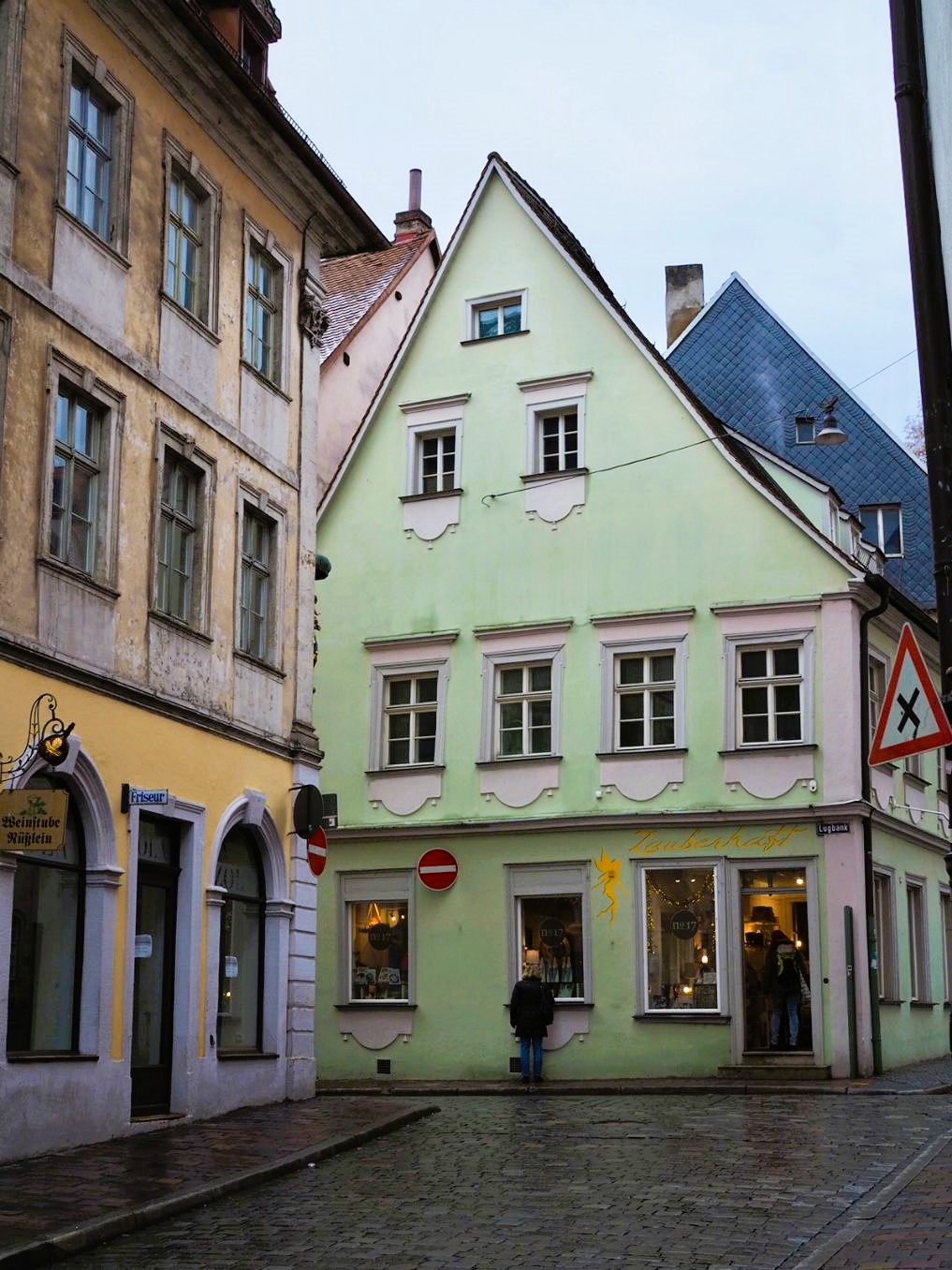
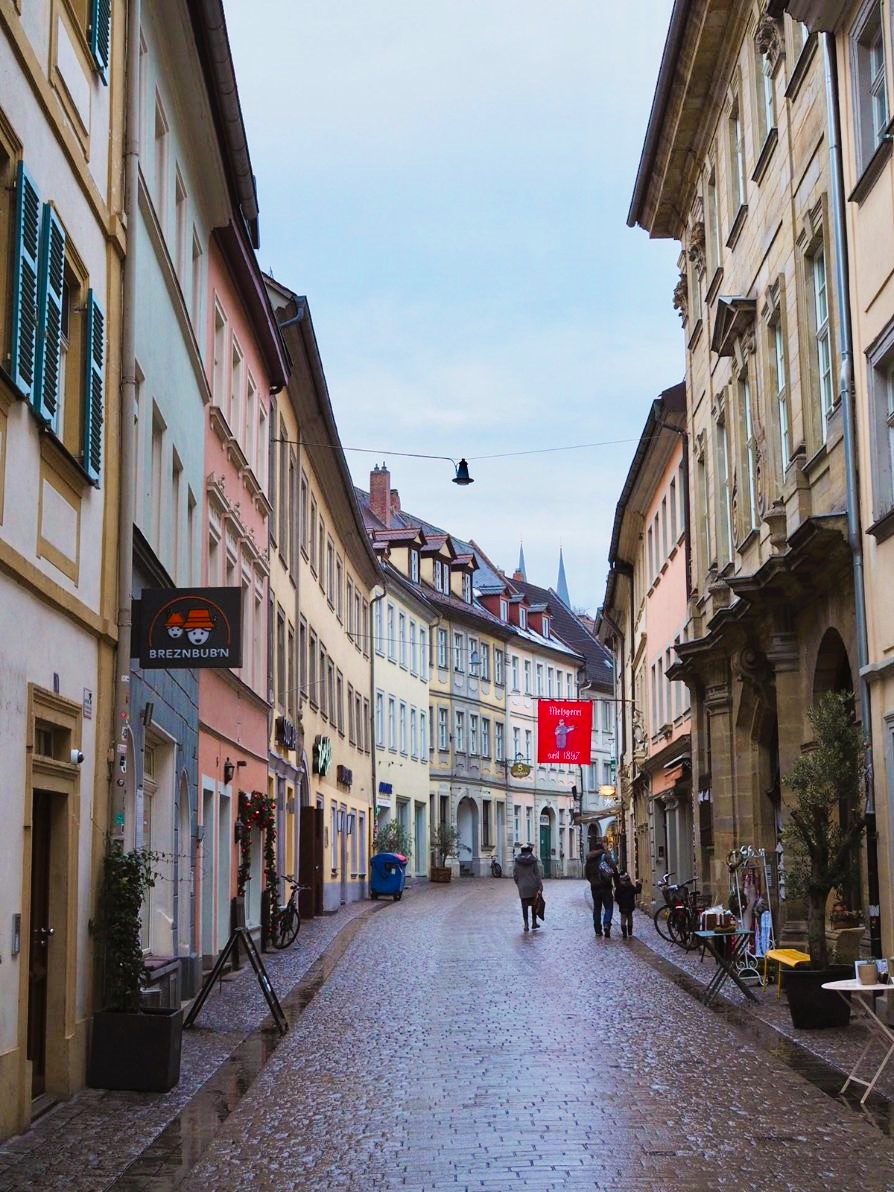

Your perfect day trip from Nuremberg to Bamberg is complete
Time to head back to the railway station and look for the next regional train in the direction of Nuremberg.
We’ve roamed past pretty fisherman’s houses, a town hall hanging out in the middle of the river and explored 13th century cathedrals.
As well as getting a literal smoky taste of local Bamberger hospitality, stuffed onions or not.
I hope you’ve had a marvellous time exploring the adorable medieval surrounds of Bamberg with me (and had time to grab a Hörnla for the trip back).
If you loved this post, don’t forget to pin it for later!

